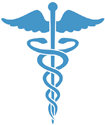3 Things Healthcare Marketers Can Learn From Retail Marketers [INSIGHT]
May 12, 2016
 We’re in a new era of health consumerism. Patients are making informed decisions about their own health and demanding better access and communication from healthcare providers. While the industry is making strides in providing such communication through technology like patient portals, providing patients with electronic access to their own records, marketing these new achievements to attract patients is still falling short.
We’re in a new era of health consumerism. Patients are making informed decisions about their own health and demanding better access and communication from healthcare providers. While the industry is making strides in providing such communication through technology like patient portals, providing patients with electronic access to their own records, marketing these new achievements to attract patients is still falling short.
To attract “health-sumers,” it’s helpful to look at what traditional retailers have been doing for years to get customers to walk through the front door. Local search optimization, conversion and measurement of web-to-store traffic are the primary tools of the digital-savvy retailer. It is known as web-to-store and healthcare practices should apply these lessons to increase web-to-walk-in for their own organizations.
Why look to web-to-store? Consider this:
91% of consumers have gone into a store based on an online experience.
Digital interactions influence 50% of in-store sales.
Mobile shopping searches increased 120% last year.
Customers who shop both online and off with a specific retailer buy 250% more on average.
45% of consumers search for physicians on Search Engines and 51% for dentists.
So, how can you tailor web-to-store tactics to suit the highly unique needs of a medical practice? Here are a few key tips:
#1: Make your online presence highly valuable to patients
Patients need to feel empowered about their own healthcare decisions every time they visit your website. Dimensional Research reports that 62% of web users made a purchase after their online research. The same philosophy is applicable to healthcare. Your site should provide as much informational content as possible to help patients make decisions regarding their health. Preventive care, information about what to expect when visiting the office, insurance and billing information can all be included. Use interactive content such as videos, care checklists, and health evaluation tools to engage and hold the interest of patients.
#2: Focus locally
A recent Google consumer survey found that 50% of consumers who conduct a local search on their smartphone visit a store within a day and Google searches including the keywords “near me” have grown 2.4 times year-over-year. Always make sure that local office information is easy-to-find on your site. When there are multiple offices, include a locator tool to make nearby locations easy to find for patients. Unique urls for each office location can enhance visibility in search results, and the convenience of making an appointment online can motivate patients to take immediate action.
#3: Harness the power of mobile
Speaking of local, according to MOZ local, over 50% of mobile queries have local content. This makes mobile the ultimate front door to your office, and optimizing your site to make it user-friendly for mobile devices is essential.
Another facet is using content marketing to maximize the power of mobile. Here’s an example: A medical practice writes a blog post on what to do in case of a bee sting. A potential future patient is stung and reaches for their smartphone to determine a course of action. Because of the search relevance, this medical practice is right in front of this person right when they need care—driving either walk-in traffic, an appointment, or at the very least brand awareness of the practice and its location.
Web-to-walk-in is the perfect way to ensure medical organizations stay relevant and accessible in the ever-increasingly competitive healthcare consumer marketplace. With the right balanced package of strategy and execution, digital marketing can have patients beating a path to your door.
By Ken Robbins, Featured Contributor
About the author: Ken Robbins, founder and president, Response Mine Interactive
Courtesy of mediapost































